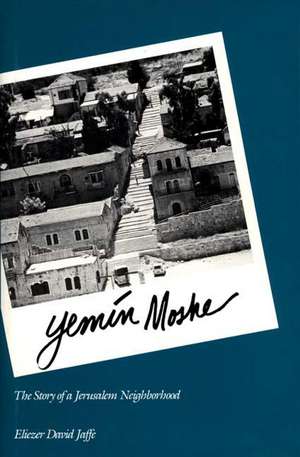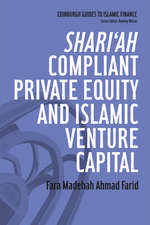Yemin Moshe: The Story of a Jerusalem Neighborhood
Autor Eliezer D Jaffeen Limba Engleză Hardback – 21 mar 1988
When the American Jewish philanthropist Judah Touro died in 1854 he entrusted $50,000 to the Englishman Sir Moses Montefiore, requesting that it be used for the poor of Jerusalem. This engrossing book, the result of twelve years of research, tells the story of the plot of land purchased by Montefiore in 1855--its changes in population, land use, and social structure. This book is no bland history, it is an argumentative presentation that convincingly presents an important point of view about urban renewal whose general applicability merits serious consideration. "Judaica Book News"
When the American Jewish philanthropist Judah Touro died in 1854 he entrusted $50,000 to the Englishman Sir Moses Montefiore, requesting that it be used for the poor of Jerusalem. This engrossing book, the result of twelve years of research, tells the story of the plot of land purchased by Montefiore in 1855--its changes in population, land use, and social structure that existed in this neighborhood from its earliest days to the present time. Special attention is given to the rehabilitation of the neighborhood after the Six-Day War, the legal methods used to remove slum dwellers, and the final gentrification of the area with a totally different socio-economic class of residents. The lessons to be learned from this case study have relevance for other neighborhoods around the world.
Preț: 345.74 lei
Preț vechi: 476.29 lei
-27% Nou
66.16€ • 71.85$ • 55.58£
Carte tipărită la comandă
Livrare economică 22 aprilie-06 mai
Specificații
ISBN-10: 0275926907
Pagini: 188
Dimensiuni: 156 x 234 x 13 mm
Greutate: 0.45 kg
Editura: Praeger
Colecția Praeger
Descriere
When the American Jewish philanthropist Judah Touro died in 1854 he entrusted $50,000 to the Englishman Sir Moses Montefiore, requesting that it be used for the poor of Jerusalem. This engrossing book, the result of twelve years of research, tells the story of the plot of land purchased by Montefiore in 1855--its changes in population, land use, and social structure that existed in this neighborhood from its earliest days to the present time. Special attention is given to the rehabilitation of the neighborhood after the Six-Day War, the legal methods used to remove slum dwellers, and the final gentrification of the area with a totally different socio-economic class of residents. The lessons to be learned from this case study have relevance for other neighborhoods around the world.















